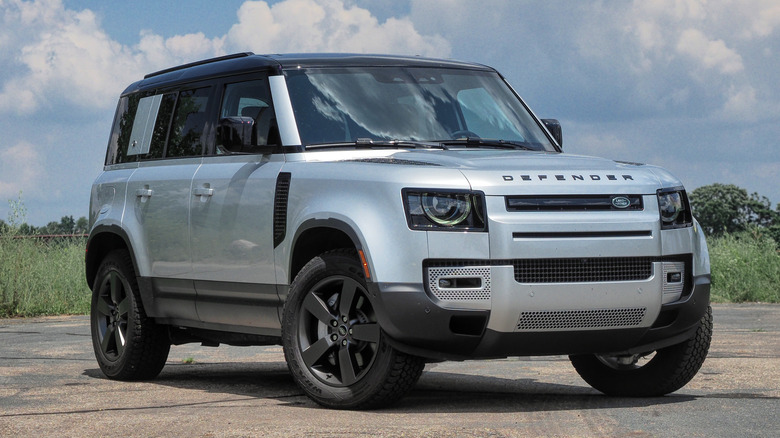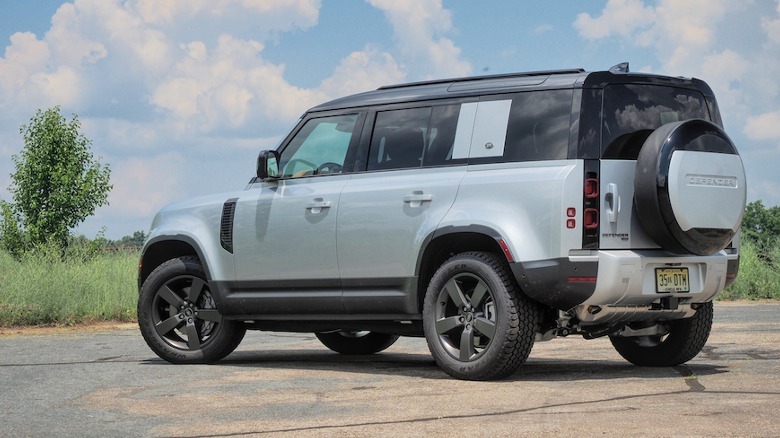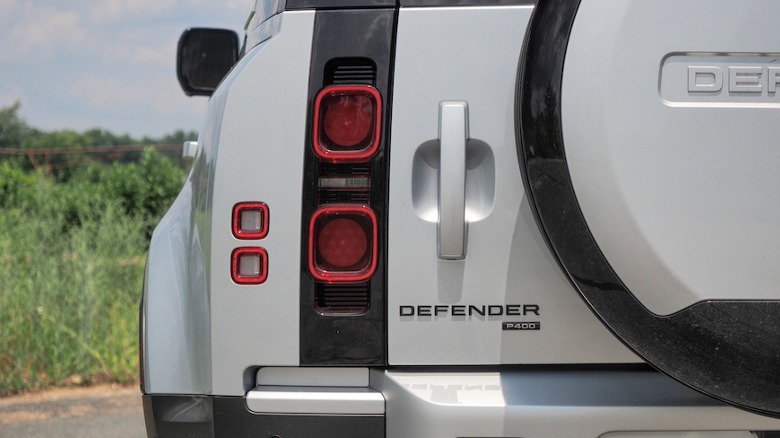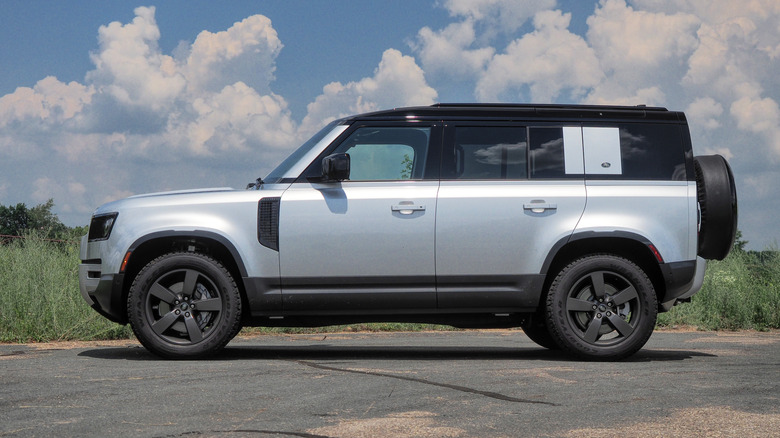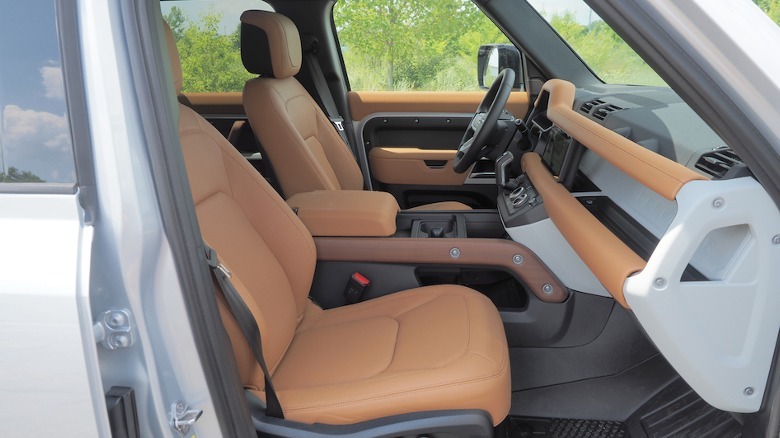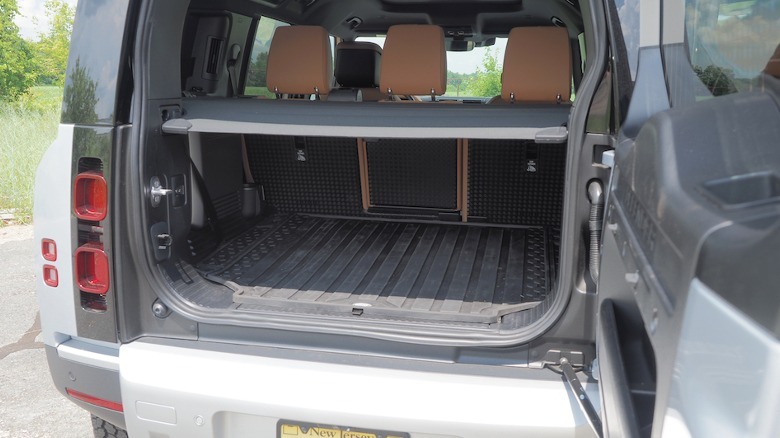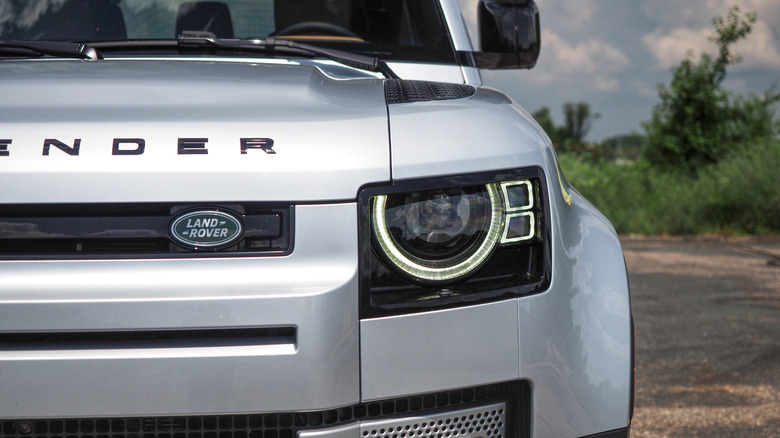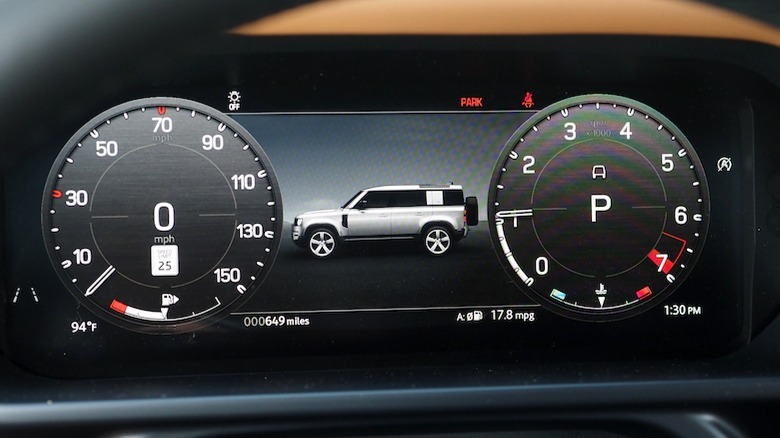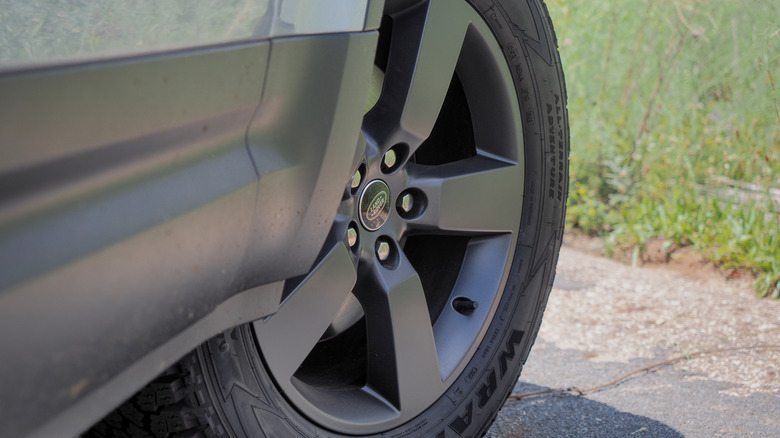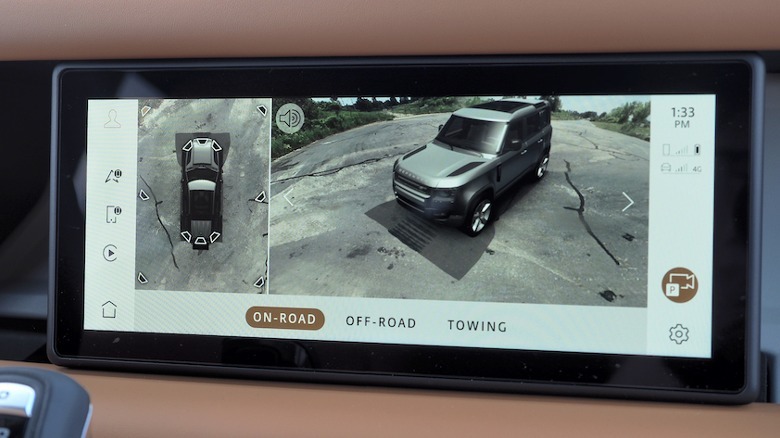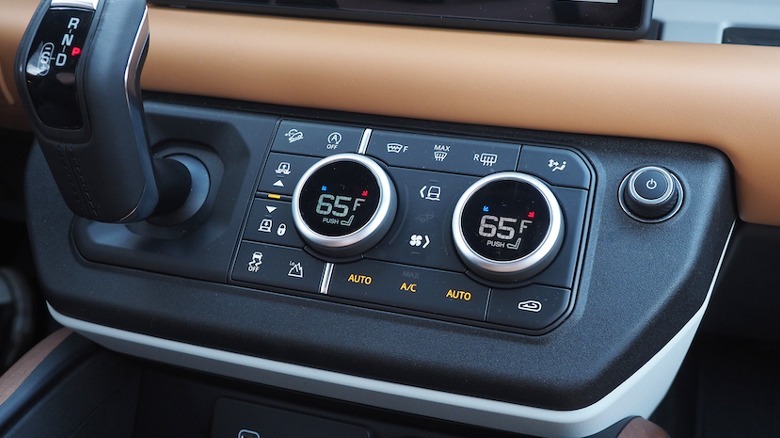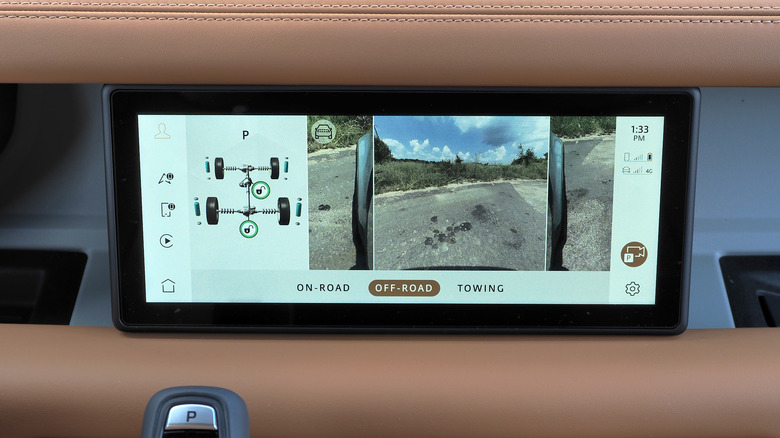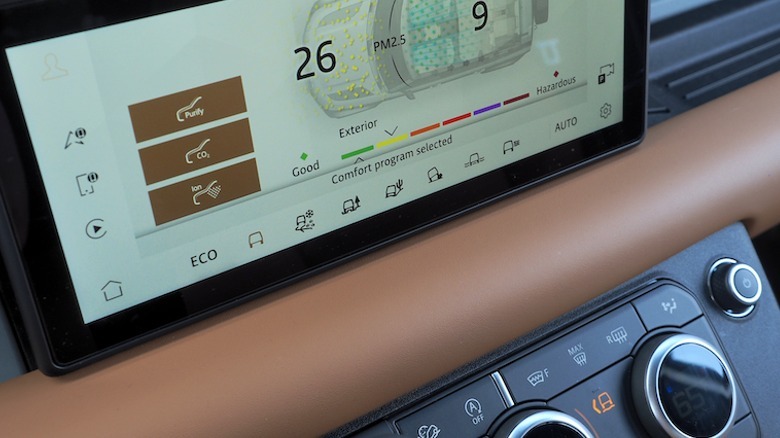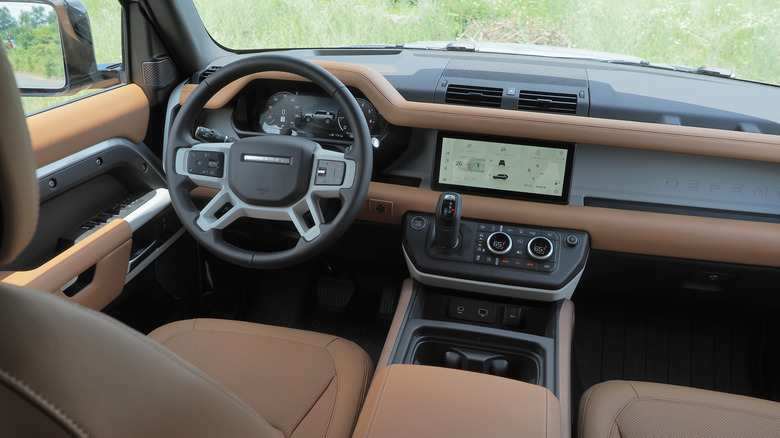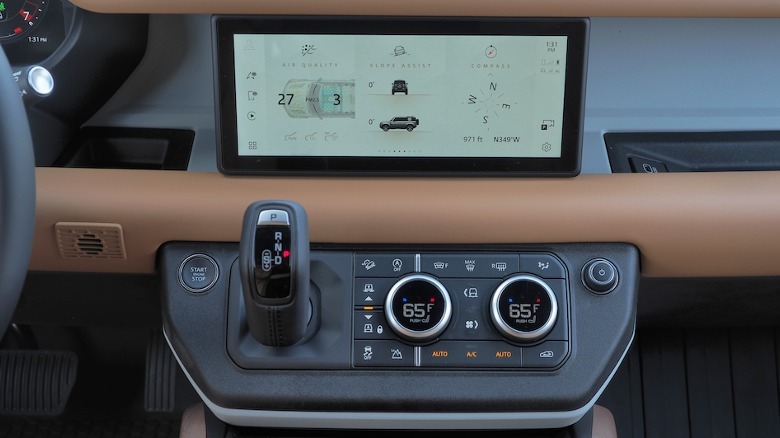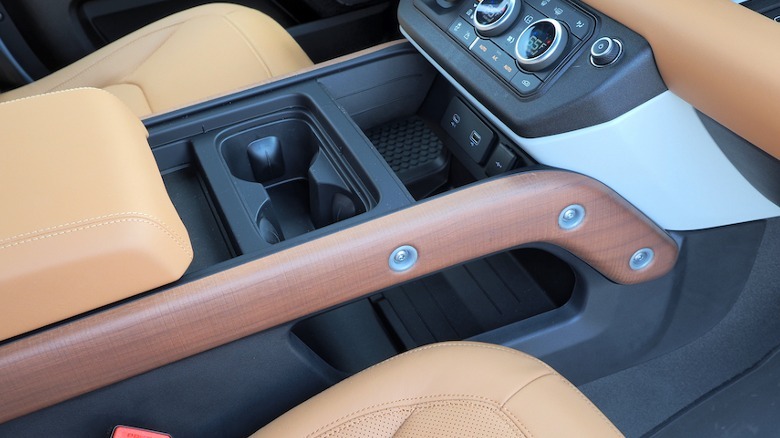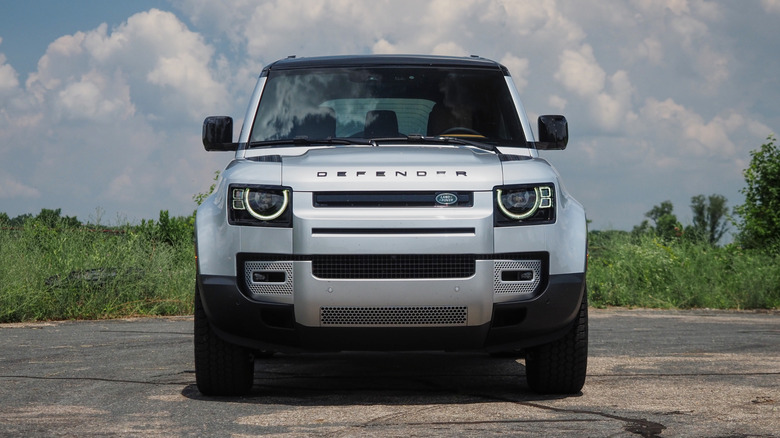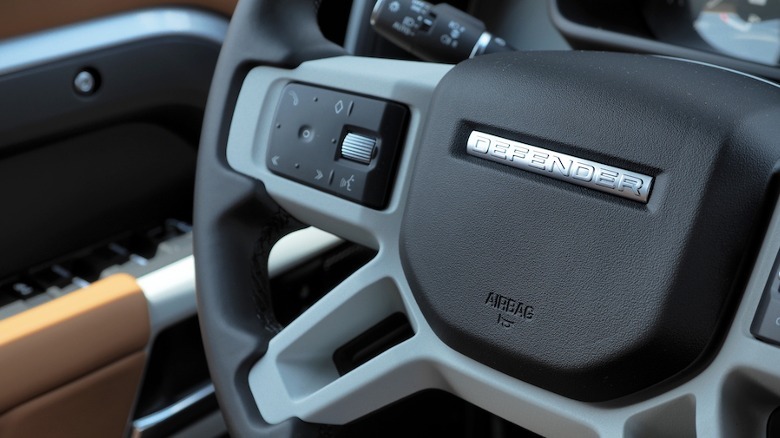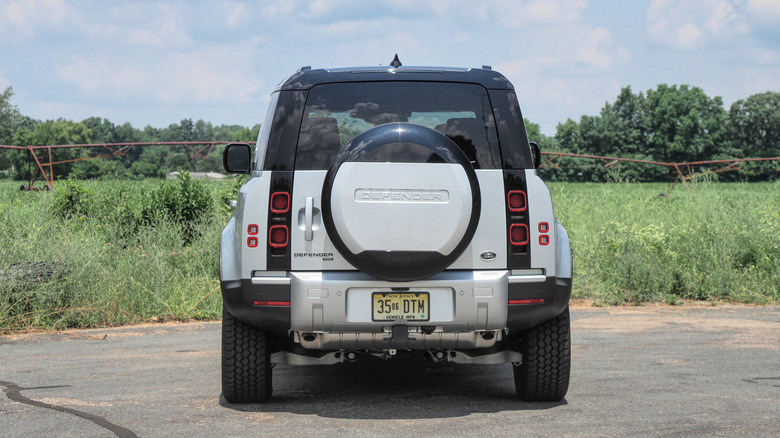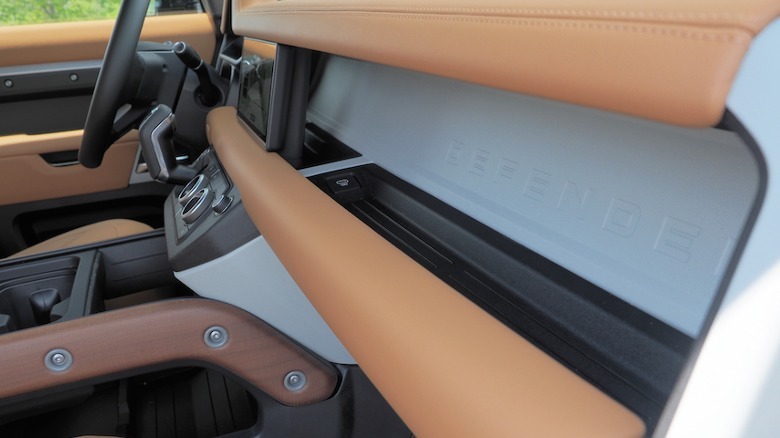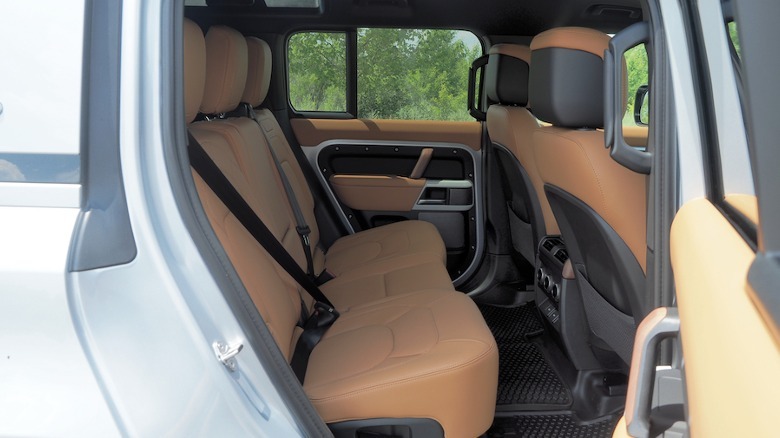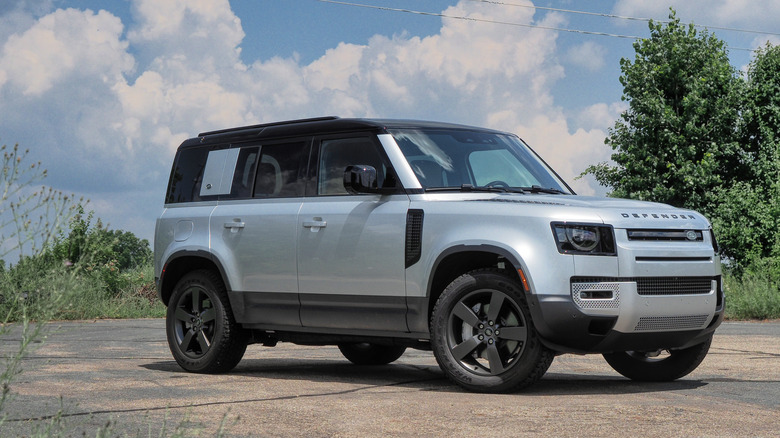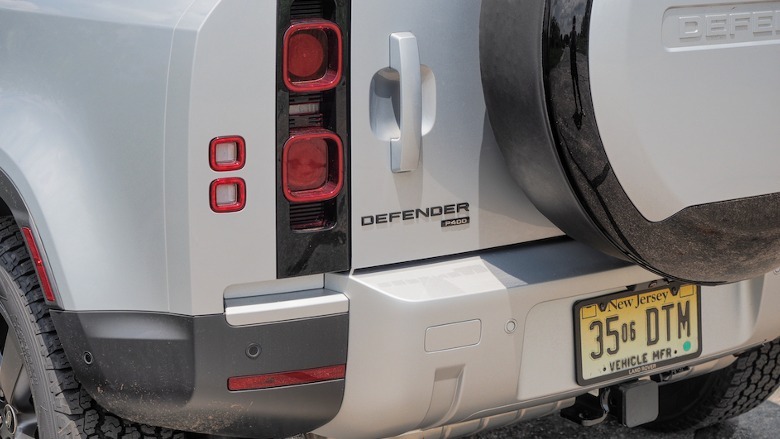2023 Land Rover Defender 110 Review: Between Two Worlds
- Head-turning styling
- Mild-hybrid engine is powerful and refined
- On-road comfort meets off-road capability
- Gets expensive, fast
- Fuel economy underwhelms
- Cargo capacity not as spacious as some rivals
Personality is almost as tough to define as it is to fake, so you'll just have to take my word for it that little in the SUV category comes close to the charming Land Rover Defender. Maybe we can blame the nameplate's lengthy absence from North America for part of that, fueling more than two decades of cross-Atlantic envy. Still, even with the Defender's foibles (and premium price) now clear, it's hard not to be swayed.
I confess, I'm a sucker for the new Defender's aesthetic. Poised between burly off-roader fare like the Wrangler and Bronco, and luxe-trucks like a Range Rover, I think it holds up equally in either two-door 90 form or this four-door 110 configuration. Even the stretched Defender 130 — with its more capacious three rows of seats — looks decent, despite its jutting rear.
All have the same blend of rugged precision that works so well. The chunky headlamp clusters take on a moody frown when the truncated circular daytime running lights spring into action; the slab-sided proportions and dual-tone finish leave the Defender looking stacked and muscular. At the rear, crisp lines meet Land Rover's playful LED lighting.
Venture off-road — or even into some post-storm puddles — and their 3D sculpting turns them into snazzy little mud-gobblers, but I can't really be angry when they look so good. The same goes for the 20-inch wheels, a $800 option for their satin dark gray finish: they mess up easy, but perhaps a Defender only looks right when it's flecked with dirt.
There's practical, and there's just plain appealing
Personally, I think I'd let design lead me to the Defender 90, were it my money. All the same, this 110 is undoubtedly the sweet spot for most SUV buyers, particularly those with families. Both rows are spacious, though high sills mean you might want to drop the air suspension — part of a $1,800 options pack that also includes adaptive dynamics and automatic headlamp leveling — before you load in smaller kids.
As standard, the Defender 110 comes with seating for five, complete with a 60/40/60 split rear bench. There's a six-seat option with a snug jump seat squeezed into the middle of the first row or a seven-seat configuration with a pair of manually folding chairs in the trunk. They're seriously diminutive, though, and unless you're dealing with very small children you should probably plump for the 130 if you really need a three-row family hauler.
In two-row form, there's a reasonable 34 cu-ft of trunk space, which expands to 78.8 cu-ft with the second row folded. The Defender's side-hinged trunk door makes accessing it easy, while a $650 interior protection pack adds sturdy rubber mats among other reassurances.
With power comes thirst
Land Rover offers four drivetrain options for the Defender 110: the P300, with a 2.0-liter inline-four gas engine; the P400, with a 3.0-liter inline-six mild-hybrid; and the P500 and P525, with two different tunes of a 5.0-liter V8 gas engine. Fun as the V8 is — in P500 form it packs 493 horsepower and 461 lb-ft of torque, rising to 518 horses in P525 configuration — its 5.1 second 0-60 mph time brings with it a prodigious thirst.
At the other extreme, the P300's 296 hp and 295 lb-ft of torque seem a little weedy. The P400 mild-hybrid — which supplies 395 horsepower, 406 lb-ft of torque, and a respectable 5.8 second 0-60 time — feels like a nice compromise, even if the electrification isn't enough to turn it into a fuel sipper.
Its EPA economy rating of 18 mpg in the city, 23 mpg on the highway, and 20 mpg combined still beats out the inline-four by one or two points in each category. In practice, I saw just shy of 18 mpg with my own mixed driving, so Land Rover's 20 mpg seems reasonable if you took it easy on the gas pedal and avoided pushing the transmission shifter over into "S" sport mode too often. Eventually there'll be an all-electric Defender, but the Range Rover is in line to go BEV first.
Refined on the road
On-road, the Defender is surprisingly composed. Certainly, the air suspension and adaptive damping helps: the big SUV floats over bumps and potholes without wallowing, undoubtedly aided by the chunky sidewall on the tires. Hit the gas and the tail hunkers down before you charge forward; I wouldn't argue with a little more growl from the engine and exhaust, but they're reserved for the P500 to assuage your mood after discovering the V8's profligacy.
It's an easy drive, with plenty of low-end torque and nice weighting to the steering; while the dimensions are considerable, the squared-off styling means you're never too uncertain on where the Defender's edges are. A standard 360-degree camera fills in any gaps, with different views for off-road and towing too.
Honestly, despite the off-road intentions, the refinement here isn't too far from what a Range Rover provides: that's a big deal given even luxury-minded competition like the Lexus GX can still feel fairly agricultural from behind the wheel.
Don't confuse that with Land Rover compromising the Defender's abilities beyond asphalt. Though the standard coil suspension is fixed at its 8.9-inch ride height, the air suspension can shift from its standard 8.5 inches to up to 11.5 inches if required. There's a maximum 35.4-inch wading depth on the air suspension Defender, too, or 33.4-inch on the coil version.
Capable when the asphalt runs out
All-wheel drive is standard, with a twin-speed transfer box, Hill Descent Control, and Land Rover's Terrain Response system with various off-road modes. Frankly, for most people that'll be sufficient, but you can of course crank up the Defender's capabilities if you've the budget for it.
A $1,550 Off-Road pack adds an electronic active differential — it's easily controlled through the touchscreen — and off-road tires; a $1,850 Towing Pack throws in All Terrain Progress Control, the Terrain Response 2 system, a tow hitch receiver, and Advanced Tow Assist.
With that, you get a plethora of drive modes to choose from, most focused on carving paths away from mapped roads. That includes special snow and wading programs, as well as a user-configurable setting. Or, you can leave the Defender in Auto mode and allow it to figure things out itself.
For towing, the Defender 110 P400 mild-hybrid has another edge with its 8,201 pound maximum rating. The P300 and P500 are both rated for 7,716 pounds.
Easily accessible tech
There are, frankly, a lot of options that change how the Defender behaves — on-road and off — and they're generally controlled via the central touchscreen running Land Rover's Pivi Pro infotainment or the panel of physical buttons and knobs underneath it. Dedicated keys for ride height, hill descent, and traction control sit alongside the HVAC buttons.
Dual-zone climate control, along with heated and cooled front seats are standard; a $700 Cold Climate pack adds heating to the steering wheel, front windshield, and washer jets, plus headlamp washers. With wildfire smoke aplenty, I was grateful for the air purification system: the $2,600 Family Comfort pack adds a quality sensor and cabin air ionization, along with a third HVAC zone. You can track interior and exterior particulate levels through the touchscreen.
That screen does feel a little cramped on this model year 2023 Defender; for the 2024 version, it makes a welcome switch to the square-aspect 11.4-inch version also found in the 2024 Velar. Still, Pivi Pro is cleanly designed and easy to navigate, you get wireless Apple CarPlay and Android Auto, and there's an embedded modem for updates.
Land Rover is generous with its USB ports, too, including a mighty useful one tucked to the side of the front passenger's dashboard storage, while $1,000 gets the driver a head-up display to go with the digital gauge cluster.
Active safety tech and a decent warranty
A whole bunch of active safety tech requires no extra spending, which is as it should be in this high-end SUV segment. The Defender comes with emergency braking and brake-assist, blind spot assist, lane keep assist, driver condition monitor, and traffic sign recognition, plus 360-degree parking sensors to go with the ever-useful bird's eye view camera. Adaptive cruise control was a $1,200 option for the model year 2023 SUVs, with regular cruise control the default; Land Rover wisely made adaptive cruise standard on the 2024 Defender.
As for the warranty, Land Rover's standard 4-year/50,000-mile limited warranty applies, with the same amount of roadside assistance. There's also 6-year/unlimited mileage corrosion coverage. It's fair to say that Land Rover doesn't have the best reputation for dependability, though it's worth noting that underwhelming dealer experiences seem to drag down what industry observers J.D. Power rate as actually average quality & reliability.
Poised in the middle of rugged and refined
Where the idea of bringing muddy boots into the Range Rover's plush cabin filled me with horror, the Defender strikes a nice balance between rugged and refined. It's definitely practical, with plenty of bins and cubbies, but the soft-touch plastics, leather seats, and exposed screw heads add a distinctive charm that a more affordable Wrangler or Bronco can't quite match.
Some of that will cost you extra, mind. A 2023 Defender 110 SE starts at $69,300 (plus $1,475 destination), but this particular cabin boasts a $1,500 extended leather upgrade, $600 rough-cut walnut veneer trim, $400 ebony morzine headliner, and $1,800 of comfort upgrades across the two rows of seats. Factor in the rest of the options, and the SUV you're looking at here is a hefty $89,740 all-in.
That gets you a Ford Bronco Raptor, if speed and off-road leaping is your goal. Or, you could sidle over to Porsche and check out the new 2024 Cayenne, if on-road manners and badge prestige are your priorities.
Land Rover Defender Verdict
I like the Bronco, and I like the Porsche, but there's something about the duality of the Defender which I find difficult to resist. You could go off-roading all day with zero concerns, then hose it down and get nothing but admiring glances from the valet at a fancy restaurant that night. Its heritage helps people take it seriously, yet Land Rover isn't stuck in the past.
That's not to say the Defender is perfect. Even in mild-hybrid form it's hardly frugal; rivals offer more cargo space, even if they can't necessarily match its off-road potential. And it's definitely expensive, particularly if you go roaming through the options and customization that Land Rover offers.
If you just need the seven seats and the badge, a Discovery is cheaper. It can't match the Defender's abilities away from the road, though, nor its presence and old-money charm. Neither, for that matter, can SUVs from BMW and Mercedes, even if they have the edge in tech and luxury. In the end, the Land Rover Defender is as much an emotional decision as a practical one: sometimes it just comes down to how your new ride makes you feel.
